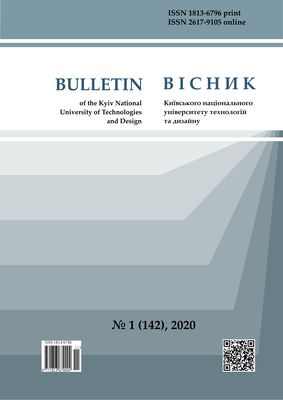DEVELOPMENT OF APPLICATION INSETS IN SEWING PRODUCTS FOR PEOPLE WITH DISABILITIES
DOI:
https://doi.org/10.30857/1813-6796.2020.1.6Keywords:
application textile composites, fibrous carbon sorbents, moisture content, drying kineticsAbstract
Determination of the influence of raw material composition and structure of textile composite materials with fibrous carbon sorbent on their moisture absorption properties. Two-layer and three-layer composite application napkins were obtained by thermal connection of non-woven needle punch fabrics with carbon fabric. In experimental studies standardized methods for determining of moisture sorption and moisture drying rates were used. It is estimated that daily long-term stay of people with spinal injuries in a wheelchair in a fixed sitting position contributes to the occurrence of ulcers in the places where the bones extend close to the skin surface. It is proposed for people with limited motor ability to use on these places in the apparel garments appliqué linings of therapeutic and prophylactic purpose on the basis of active fibrous carbon sorbents. To provide the necessary prolonged in time sorption-kinetic properties, a number of composite textile materials were produced by the method of thermal connection, in which the medical carbon fabric was combined with needle-punched nonwoven web structures, obtained on the basis of natural plant fibers. The investigation of the influence of raw material composition and structure of nonwoven base on the peculiarities of moisture absorption and drying of such systems have proved the possibility of directed regulation of these processes. The influence of the type of non-woven bases on the peculiarities of regulating the processes of moisture absorption and moisture removal of application composites based on natural plant fibers with carbon fabric is determined. A new range of textile application composite materials with adjustable moisture-transport properties has been developed for use as tabs in medical and preventive garments at places of contact with pressure ulcers.

